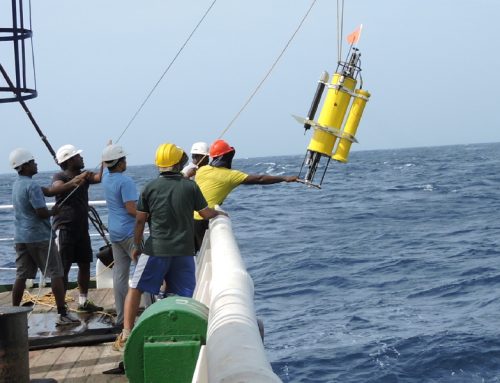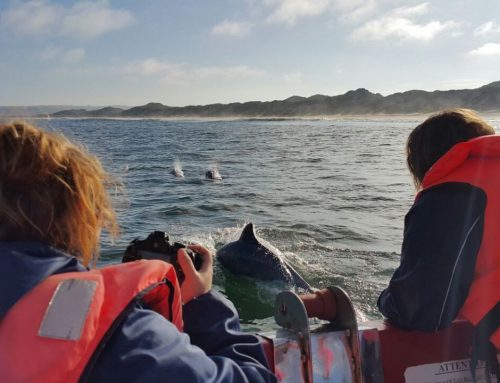Water is on everyone’s minds, at last. It should have happened a long time ago, but now that we are facing ongoing water shortages, droughts and water quality crises, South Africa is finally paying attention to what conservation and water health mean.
Foreseeing this three decades ago, the WWF-SA’s Freshwater Programme has focused on a number of catchment-wide water conservation and community engagement projects in South Africa, several of which the WWF Nedbank Green Trust has supported since its inception 26 years ago.
One of these projects is the Stellenbosch River Collaborative (SRC), which, in partnership with the WWF Nedbank Green Trust and the conservation organisations – Living Lands and the Wildlands Conservation Trust – is working on the restoration of the Eerste River catchment.
The polluted waters in the Eerste River, Stellenbosch’s main river, and two other rivers that flow into it – the Plankenbrug and Veldwachters – pose a serious health risk to the greater Stellenbosch community. This is also jeopardising the viability of the area’s key economic drivers, notably the wine and fruit producers in the Eerste River catchment.
The pollution and microbial quality of the river water (levels of human excrement and disease-causing pathogens such as E. coli) is not fit for drinking or irrigation. It fails to meet the export standards set by the European Union for fresh produce and the World Health Organisation and Department of Water and Sanitation guidelines for safe irrigation.
In response to the many negative consequences of their polluted catchment concerned citizens and stakeholders from every sector of the Stellenbosch community came together and formed the SRC. Launched in November 2013, its aim is to restore health to the Eerste River catchment.
The initiator and coordinator of the SRC is researcher Charon Marais, who is doing her PhD on sustainability and transformational governance through the University of Stellenbosch Business School, and is part of the transdisciplinary TsamaHUB doctorate programme of the Sustainability Institute.
The Stellenbosch University Water Institute (SUWI) has adopted the SRC as an important official in SUWI projects. Stellenbosch’s Municipality is an active partner in this initiative.
‘It is all about what we call the ‘river connect’ – about connecting neighbours and communities upstream and downstream of the Eerste River to restore health to the river for every member of the greater Stellenbosch community,’ Marais explains. ‘From people living in Kayamandi and Enkanini informal settlements to big businesses such as Spier and Distell, the health and sustainability of the river affects one and all.’
The Stellenbosch Municipality is responsible for the health of the Eerste River and its feeder rivers. However, heavy sewage leaks from the Stellenbosch Municipality Waste Water Treatment Plant and pollution from the Plankenbrug industrial area and the informal settlements are continuous sources of river contamination, and have been for the past 20 years.
The true gravity of the situation was brought to the attention of the broader public through national media coverage when the Wynland Water Users Association, representing farmers, individual users, conservation authorities, and the Department of Water Affairs, took legal action against the municipality for non-compliance.
The SRC has played an instrumental role in bridging the divide and creating a space where the municipality can come on board and assume its role in a number of river restoration initiatives.
One of these initiatives is the Enkanini water and sanitation pilot programme launched in March 2016, in partnership with Living Lands, Isidima Design and Development, and a group of young women and men from the Enkanini informal settlement who named their project ‘The Enkanini Water Hustlers’ with the slogan ‘Changing the Flow’.
Christine Colvin, Senior Manager of WWF’s Freshwater Programme, who oversees all of WWF-SA’s water projects, explains that Enkanini does not have any formalised services. All forms of pollution and effluent from the community end up in the Plankenbrug River.
‘To tackle this with the community members, we are drawing on learning gained from the WWF Nedbank Green Trust Msunduzi Green Corridor (MGC) – a pilot project that is promoting partnership action between communities and the public and private sector, to address the rapid decline of the Duzi River,’ Colvin explains.
‘Now in its second year, the project is addressing the severe sewerage contamination and solid-waste problem in the Duzi, in partnership with the Msunduzi Municipality and the communities living on the banks of the Duzi River and Midmar Dam,’ Colvin explains.
The Duzi River frequently registers contamination counts of well over 10 000 year-round counts, sometimes above the 100 000s, when anything over an E. coli or sewerage contamination count of 1 000 is a health risk for anyone making direct contact with the water.
The MCG is managed by the Duzi-Umngeni Conservation Trust (DUCT), which has established Eco Clubs at over 40 schools along the Duzi and a highly successful Enviro-Champs water and pollution-monitoring programme, led by members of the Mphophomeni Township adjoining Midmar Dam.
‘It is about people making the river their own, and about understanding their individual and collective responsibility to champion clean water, to report sewage leakages, to stop dumping refuse in the river and to discourage others from doing so,’ explains DUCT’s Richard Clacey, a local economic development and environmental specialist who focuses on the links between river health, community health and development issues.
The Enviro-Champs from the MCG visited their counterparts in Stellenbosch – the Water Hustlers – to share knowledge, grow water awareness and help the Water Hustlers think through how they want to manage their project. Six community members from Enkanini are currently leading the Water Hustlers’ pilot programme.
They explained that they chose the name ‘Hustlers’ because that is how they live; if you don’t hustle, nothing happens. They monitor the water quality; report leakages, burst pipes and pollution issues in Enkanini; and visit households to raise awareness about water.
‘Their commitment to this project and the operational support we are now receiving from the Stellenbosch Municipality is most encouraging,’ says Colvin. One example of this support is the painting and numbering of the manholes in and around Enkanini. This enhances municipal responsiveness when manholes overflowing with pollutants are reported.
‘Previously, there was no way of identifying the specific manholes and in an informal settlement the municipal officials often battled to locate them. Now that they are painted and numbered, it has helped to fast-track this process.’
Colvin adds that the Stellenbosch Municipality is also working on bringing services to over
1 000 households in Enkanini, including clean water and decent sanitation.
The Enkanini Water Hustlers and the SRC are receiving considerable support from Spier and Distell, who are also situated on the banks of the Plankenbrug River, downstream from Enkanini.
All members of the greater Stellenbosch community recognise the principle of ‘my neighbour’s water is my water’ and are working to achieve better quality water throughout the catchment.
‘This model could be used in many South African catchments, towns, informal areas and townships,’ adds Colvin. ‘Water pollution and failing wastewater treatment plants is a ubiquitous problem in South African and a key threat to lives and livelihoods. We need to find a way to upscale these projects for water stewardship throughout the country – it would serve all the people of South Africa significantly.’




